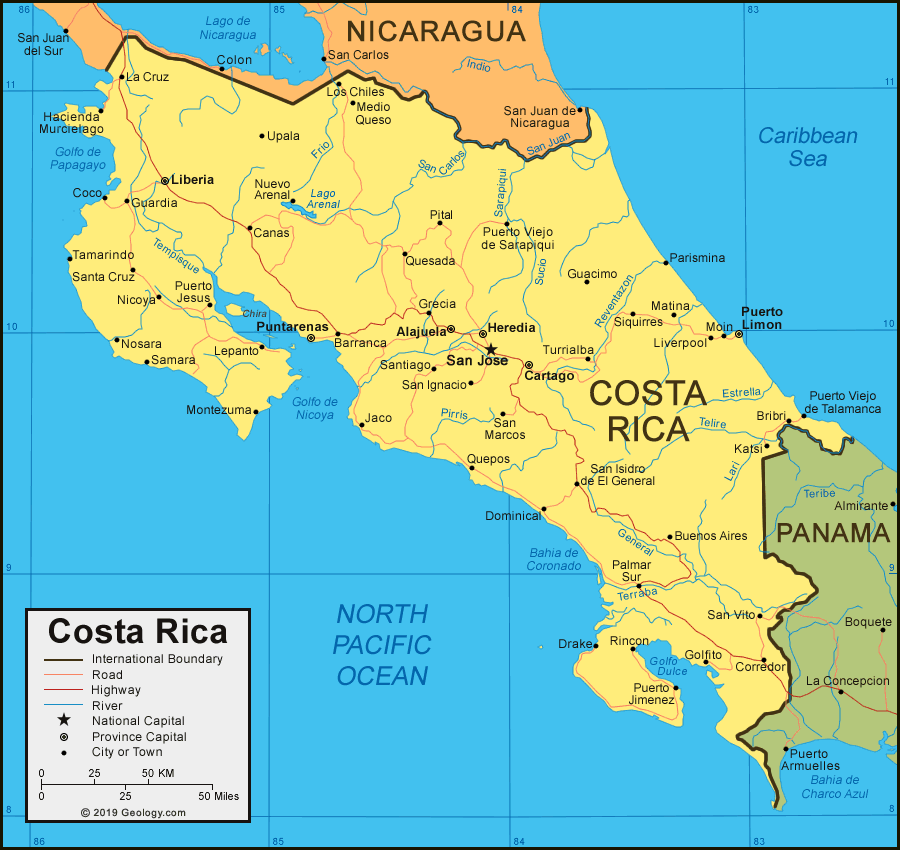Unit 3: Lesson 4
Unit 3 Lesson 4

Lesson 4 Overview
Hola!
Como estas?
In this last Unit Lesson, we are going to explore some of the Hispanic-speaking cultures through one of the 21 Spanish-speaking countries.
Let’s begin! Vamos a comenzar!
Geography
This Central American country lies between Nicaragua to the north and Panama to the south. Its area slightly exceeds that of Vermont and New Hampshire combined. It has a narrow Pacific coastal region. Cocos Island (10 sq mi; 26 sq km), about 300 mi (483 km) off the Pacific Coast, is under Costa Rican sovereignty.
History
Costa Rica was inhabited by an estimated 400,000 Indians when Columbus explored it in 1502. The Spanish conquest began in 1524. The region grew slowly and was administered as a Spanish province. Costa Rica achieved independence in 1821 but was absorbed by Agustín de Iturbide for two years in his Mexican empire. It became a republic in 1848. Except for the military dictatorship of Tomás Guardia from 1870 to 1882, Costa Rica has enjoyed one of the most democratic governments in Latin America. In the 1970s, rising oil prices, falling international commodity prices, and inflation hurt the economy. Efforts have since been made to reduce reliance on coffee, banana, and beef exports. Tourism is now a significant business. Óscar Arias Sánchez worked to simultaneously heal his country's economic woes and foster peace in Central America. José Maria Figueres Olsen of the National Liberation Party became president in 1994. He opposed economic suggestions made by the International Monetary Fund, instead favoring more significant government intervention in the economy. The World Bank subsequently withheld $100 million of financing. In 1998, Miguel Angel Rodríguez of the Social Christian Unity Party became president, pledging economic reforms, such as privatization. In 2000, Costa Rica and Nicaragua resolved a long-standing dispute over the navigation of the San Juan River, which forms their shared border. A psychiatrist, Abel Pacheco, also of the Social Christian Unity Party, won the presidency in elections held in April 2002. In May 2003, several national strikes took place: energy and telecommunications workers over privatization and teachers over their salaries.
10 Fun Facts about Costa Rica
- Costa Ricans call themselves Ticos and Ticas.
- Costa Rica is slightly smaller than Lake Michigan.
- There are 800 miles of coastline, both on the Atlantic and Pacific.
- Costa Rica borders Nicaragua to the north and Panama to the south.
- It only takes up .03% of the planet's surface but holds 5% of its biodiversity!
- There are over 130 species of fish, 220 reptiles, 1,000 butterflies (10% of the world's butterflies are in Costa Rica!), 9,000 plants, 20,000 species of spiders, and 34,000 species of insects!
- National parks and refuges protect more than 25% of Costa Rican land.
- They don't have summers and winters like the USA, but a dry season runs from December to April, and a rainy season runs from May to November.
- The average life expectancy of 77 years is one of the highest in the world.
- Costa Rica has a female president, Laura Chinchilla.

Details
Land area: 19,560 sq mi (50,660 sq km); total area: 19,730 sq mi (51,100 sq km)
Population (2012 est.): 4,636,348 (growth rate: 1.29%);
birth rate: 16.4/1000;
Infant mortality rate: 9.2/1000
Life expectancy: 77.89; density per sq km: 82
Capital and largest city (2009 est.): San José, 1,416,
Monetary unit: Colón